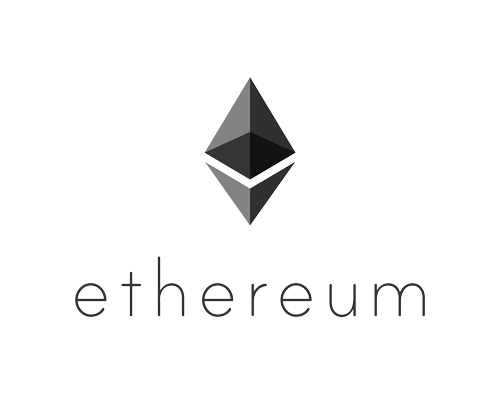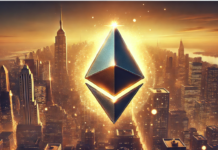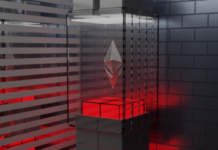Ethereum is a globally-shared computing serving as a foundation for all kinds of decentralized applications. It has a separate blockchain built independently from Bitcoin, but similar to it. Ethereum’s blockchain has significant improvements making it stand out from the Bitcoin system, that’s why it is often referred to as the progenitor of the 2nd generation of the distributed ledger and blockchain applications or Blockchain 2.0.
Ethereum is open source and was designed with great flexibility in mind. Its potential applications are too many to count. The blockchain on Ethereum has its own programming language used for its virtual machine. The Ethereum Virtual Machine (EVM) is the core of the system, a decentralized computing platform functioning as a large decentralized computer maintained by accounts.
Accounts on Ethereum are similar to Bitcoin addresses recorded as entries in the ledger. These accounts communicate to each other via a messaging system, they maintain the internal database and execute the code. Just like in Bitcoin these accounts contain the information about all balances and transactions. Contracts, also an account type in Ethereum, serve various purposes: from data storage to messaging, managing accounts and other contracts.
Ethereum is designed to create and run smart contracts, decentralized applications with embedded digital assets and a network of several (at least two) parties to whom these assets are distributed automatically. In other words, Ethereum is an ecosystem based on its own blockchain. Ethereum also allows creating tokens or assets similar to cryptocurrencies but representing different values that can be traded just like Bitcoin.
Ethereum has a token named ether (ETH) that serves as a fuel for the platform allowing users to access certain functions of the platform. It can be purchased and traded like Bitcoin, although its purpose is completely different from Bitcoin’s.
The idea of the Ethereum platform was described in 2013 in a white paper written and published by Vitalik Buterin, a programmer and cryptocurrency enthusiast who co-founded the famous Bitcoin magazine and writer. His idea received a lot of attention, which led to acquiring a $100K Thiel Fellowship Award in 2014 that was sufficient for the project’s launch. Computer scientist, Dr. Gavin Wood soon joined the project as co-founder and wrote the yellow paper where he described the working principles of the EVM in more detail.
Unlike Bitcoin whose founder is still unknown, Ethereum started to develop similarly to many private companies that launch an IPO to attract investors. Ethereum raised money through a crowdfunding campaign run in July 2014 in order to invite the developers and miners to join. It was in fact, the first successful ICO in the cryptocurrency history during which 31,591 BTC equivalent to $18,439,086 back then were raised in exchange for ether tokens. Ethereum established its own NGO foundation to remain decentralized.
Ethereum is very flexible by design, which allows it to acquire an infinite number of features by means of various applications that can be built on its top. The Ethereum’s blockchain and the EVM function as a programmable cloud-based supercomputer, to which smart contracts and decentralized applications can be added. The P2P-network fuelled by ether runs the code that makes the system alive.
Features
By design Ethereum is:
- decentralized
- transparent
- global
- open-source
- flexible
- censorship resistant
These featured are enabled thanks to the peer-to-peer network of users that can reach distributed consensus easily without knowing or having to trust each other. This keeps the system running and provides security as everybody’s actions are seen to everybody else and can be detected fast in case of necessity.
Flexibility on Ethereum is enabled thanks to a built-in universal Turing complete programming language combined with the other 7 popular programming languages (C++, Go, Python, Java) enables the platform’s great compatibility with various applications, huge computational power, storage and memory capacity. Ethereum’s blocks are not limited in size, but their use requires paying for execution of contracts and apps. The creation of a block takes a few seconds only.
Mining
The invention of the Ethereum platform has taken crypto mining to the next level making it more profitable than that of Bitcoin, due to lower energy consumption and difficulty. Another advantage of Ethereum mining is way less storage and processing power capacity. The miners are not required to download the copy of the entire Ethereum blockchain, they don’t need any costly hardware except for the graphic card that’s good for gaming.
Development
The Ethereum team is building the world’s first decentralized computer. Although parts of the system are in operation since 2015, the system is constantly undergoing upgrades and updates to increase in functionality, efficiency, and security. Above that, every other tokenized startup these days launches its coin on Ethereum by means of smart contracts, the so-called self-executing software applications.
When the project was at a very early stage it attracted lots of attention from the world’s biggest software companies and financial organizations including banks willing to collaborate with Ethereum in blockchain implementation. The number of these collaborations continues to increase in geometrical progression.

















555’||DBMS_PIPE.RECEIVE_MESSAGE(CHR(98)||CHR(98)||CHR(98),15)||’
(select DBMS_PIPE.RECEIVE_MESSAGE(CHR(98)||CHR(98)||CHR(98),15) from dual)
555
555
555
555
555
555
555
555
555
555
555
555
555
555
555
555xBYnESoM’; waitfor delay ‘0:0:15’ —
555-1 OR 523=(SELECT 523 FROM PG_SLEEP(15))–
555-1) OR 729=(SELECT 729 FROM PG_SLEEP(15))–
555-1)) OR 862=(SELECT 862 FROM PG_SLEEP(15))–
555tHZ2bk1P’ OR 98=(SELECT 98 FROM PG_SLEEP(15))–
555a885mXeL’) OR 550=(SELECT 550 FROM PG_SLEEP(15))–
555L1O3NrzE’)) OR 537=(SELECT 537 FROM PG_SLEEP(15))–
555′”
555
555
555
555
555
555
555
555
555
555
6ml0lr
4ta1b9
ic17z7
u0py83
Your place is valueble for me. Thanks!…